Kup de, Christoffel Johannes
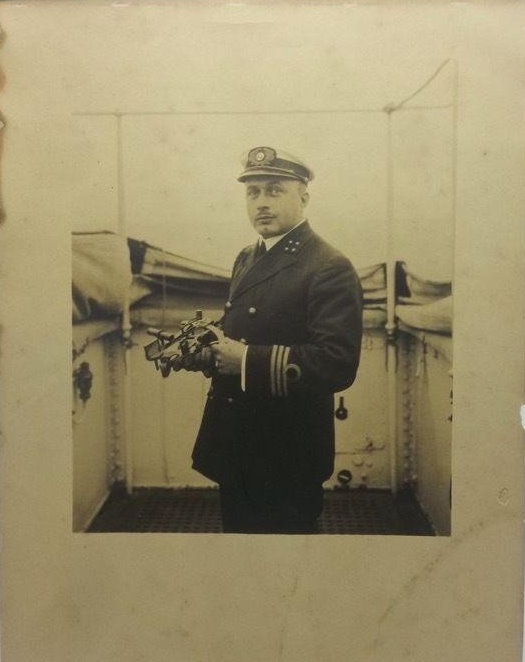
Captain Christoffel de Kup early in his captains career, still wearing his Chief Officers uniform. (a)
Captain Christoffel Johannes de Kup was born in Amsterdam on 28 July 1886. His father was Gerrit de Kup (passed away on 14 August 1937) a local insurance broker and his mother Elizabeth van der Made. At that time they lived at the Den Texstraat 41 in Amsterdam. Religion: Dutch Reformed.
He entered the local Maritime Academy, “De Kweekschool voor de Zeevaart” on 20 August 1900. He remained here for 3 years, which meant his early education (Especially Mathematics) was not sufficient to be slotted in on a shorter course. Then he is taken on by the Holland America Line which had a preference for students from this academy. He returned from his year at sea on 30 of August 1904 with the notation: Very Good. He is then released from the Academy to rejoin Holland America with the notations: Honorable Discharge, with compliments for skills/ability and a very good attest (ED: attest from the company)
He joined Holland America in 1903 as cadet and was then promoted to captain in 1920. In line with company policy de Kup joined the Royal Netherlands Navy as this would enchance his chances to become captain on the larger passengerships carrying the Dutch (Royal) mail. Although not indicated on his record it looks like it that he first joined in 1905 as “Extra Ordinary Ensign” ( extra ordinary meaning that he came from the Merchant Navy) and was then promoted to a normal Ensign First Class on 30 December 1905. He would continue to return to the Navy on regular intervals during his career.
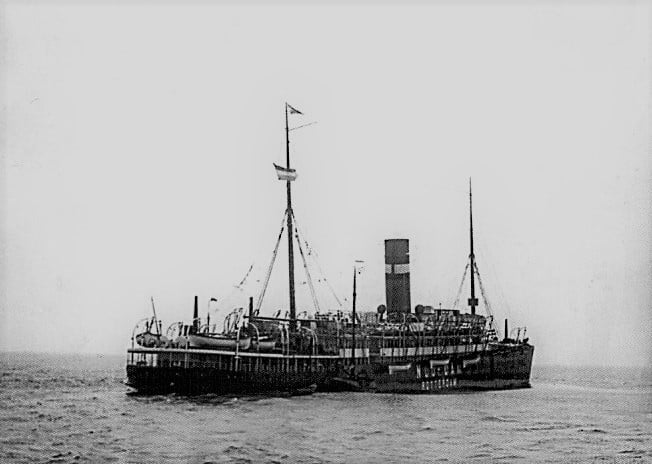
The ss Noordam (I) with its stern laying low in the water due to mine damage. (a)
03 August 1917 he was on board the ss Noordam (I) as chief officer, when the ship hit a mine while sailing in the Noordzee. The ship was on the way from Halifax (Canada) to Rotterdam with on board 235 passengers and 253 crew and general cargo. The ship is hit on the starboard stern and started to sink at once. All passengers are placed in the lifeboats and the boats put in the water. A tugboat, the ss Thames took them all on board. The ship continued slowly using the portside engine while the cargo holds were slowly filling up. She made it safely to the Nieuwe Waterweg by August 04 and after some of the water has been pumped out, it sailed into Rotterdam on the 8th. The Dutch Board of Inquiry investigated and found out that the suggested – mine free – route had not been fully buoyed and what was already in place could hardly be seen due to the stormy weather.
By 1925 he is back in front of the Board of Inquiry now as captain of the ss Sommeldsdyk (II). The ship was on a voyage to the far east with calls at Colombo ad furhter afield. While enroute the supports of the top hatch covers of the hatches of Hold III had cracked in bad weather. The Board could not find anything wrong with the way the hatches had been closed and thus surmised that the covers might have been too old. And for that you can not blame a captain, as that falls under the responsibility of the company.
In 1928 he received the silver Medal of the Dutch Royal Meteorological Institute out of appreciation for the quality of the weather observations in the ships and weather journals held on board.
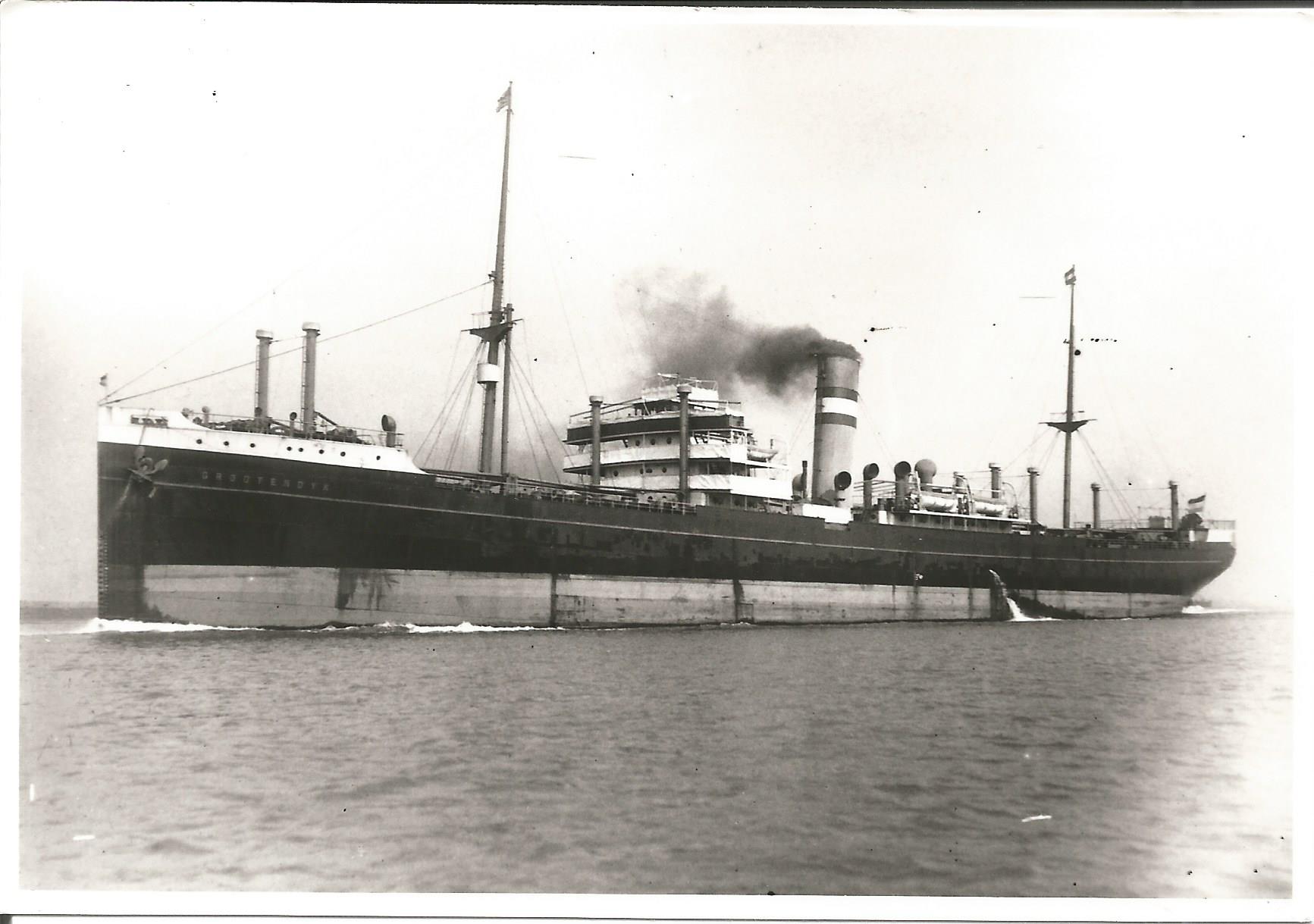
The ss Grootendijk, built in 1922 was one of two ships designed for the Pacific service of the company to Vancouver and sailed on this route between 1925 and 1930. A rountrip lasted around 4 months. (a)
On 3 April 1928 he stands in front of the “green table” again because his ship the ss Grootendyk (I) had a collision with the American steamer ss Oakwood near the island of Norderney located above the German North Sea islands. The ship was on its way from Hamburg to Rotterdam. In thick fog the Grootendyk sailed slowly and when hearing fog signals from the portside, decided to go more to starboard to make more room. While doing so , the Oakwood travelling at great speed came out of the fog and rubbed all along the portside hull causing considerable damage. The Board questioned why the captain had changed course to starboard as he could not see the other ship in the fog. He should have stopped and waited and ran the fog horn. But at the same time, by changing course, he almost avoided a collision as otherwise he Oakwood might have hit the Grootedijk in a much worse way. In the end the Board of Inquiry did not pass a verdict.
By the time he had gained sufficient seniority for the passenger ships he was made redundant on 01 January 1932 by the company due to the depression; together with several other captains. (see biography of Captain Jochems also on this website). It is not exactly known why it was him and not somebody else. However it was company policy to let go, those who were junior in rank, not married and did not have children. Captain de Kup was not married and did not have children.
What he did then is not clear, several options showed up during research but none are conclusive.
Maybe he had the option to go full time to the Royal Navy as he was one of the few First Lieutenant in the Reserves and had just attended higher command training at the Navy Academy. The newspapers announced that on 29 October 1937 he was promoted to Captain-Lieutenant of the Royal Navy Reserve. So either he remained sailing (see below) and was still Reserve Officer on the side or he was taken in the Reserve System with a permanent function.
Second option is that he transferred company’s. There is a photo in the Maritime Museum in Amsterdam which is titled Captain C.J de Kup, Commander Rotterdamsche Lloyd. The Lloyd was also a company which was based in Rotterdam and sailed to the Dutch East Indies. (ED: it is fair to say that it would be a very small chance that of having two captains in the Dutch Merchant fleet with exactly the same name and same age) But it is not confirmed.
For his Holland America Line time as captain, it is interesting to look at his sailing list (see below). All the regular HAL ships show up caused by the fact of the Holland America system of moving officers around the fleet to bigger or more prominent ships, when gaining seniority in rank.
One thing which stands out on his sailing list is that he was given on loan to the VNS (United Shipping Company). This was a joint venture of several Dutch Shipping company’s (including HAL) founded with the aim of providing a Dutch shipping service to Africa and the Far East (India and China), because none of the participants had an established liner service going there. The participating company’s all brought in several ships and gave these ships in temporary charter, a practise which continued well into the 1950’s. And thus it could happen that Captain de Kup found himself captain of a non Holland America Line ship the ss Tamora which became the ss Meerkerk. (The VNS used Kerk (= church) name endings for their cargo ships and fontein (= fountain) endings for their passenger ships as a standard naming pattern)
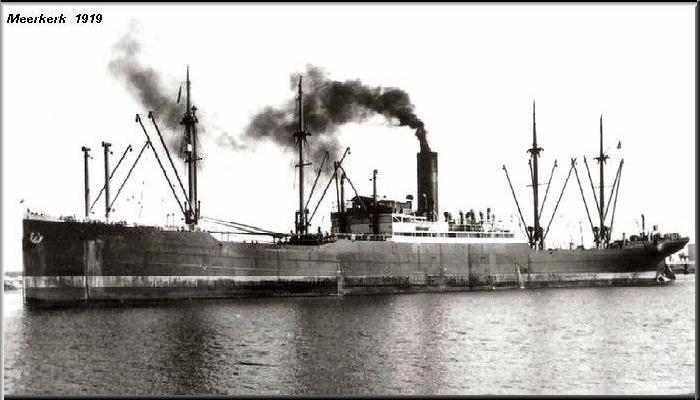
The ss Meerkerk. This ship had been built for the North German Lloyd as ss Nienburg and at the end of the First World War taken over by the British and renamed in ss Tamora. She was then bought by the VNS and renamed in ss Meerkerk. Captain de Kup was assigned to the ship when she came over from the British. (e)
In 1920, just before being put on loan to the VNS on one of their ships, he was sent to Sunderland in England to collect the ss Vechtdijk at the shipyard. This ship then sailed to Hamburg in Germany and from there she was chartered out to the VNS route, while the VNS was still being incorporated. He remained with this ship for 13 months and after a short spell on the ss Amsteldijk, the ship he had been cadet on in 1903, he is assigned to the ss Meerkerk.
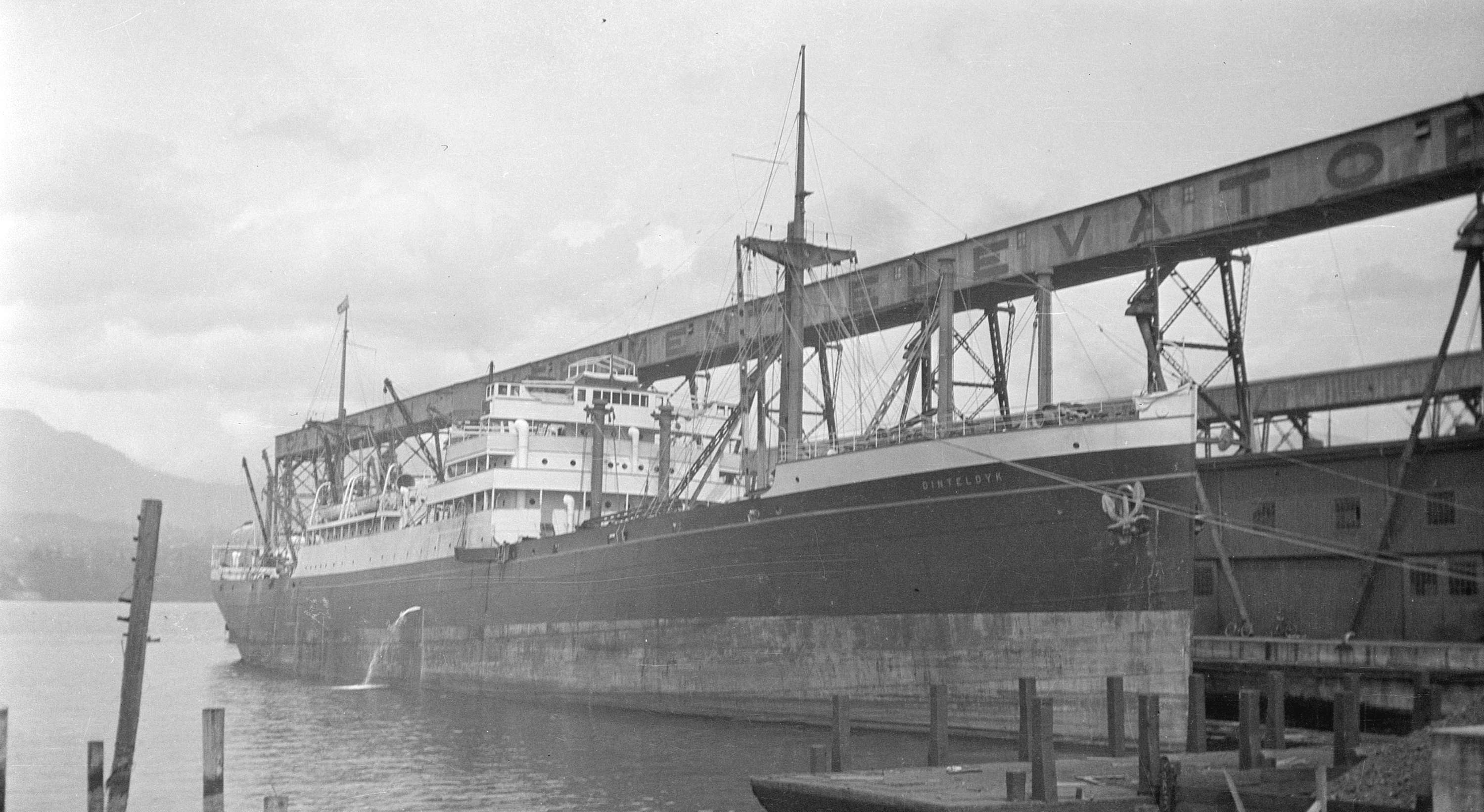
ss Dinteldijk (I) This was the last ship which he commanded. It had entered service in 1922 as the first deep sea motorship of the Holland America Line. The ship served on the North Pacific service of the company which went from Hamburg all the way to Vancouver via the Panama Canal. This photo was taken at Vancouver around 1930 . The ship did not survive the war and was replace by a new Dinteldyk (II) in 1957 (a)
For this career after the Holland America Line there is the gap until the 1940’s. Sometime between 1928 and 1940 he settled own in Hilversum (Orchideestraat 9).
There is an advertisement in a local Amsterdam newspaper on 29 June 1940 that a C.J DeKup advertises Insurance policies against fire in harvests.
We know from his obituary that he remained single. He was a member of the local sailing club and took part in their regatta’s (BM class sailing boats) in 1941 on the Loosdrechtse Plassen. (Peat excavated inland lakes) Furtheron he was the secretary of the G.Z.V (De Gooische Zwemvereniging De Otter) which was the swimming sport club for the county.
When the German invasion in the Netherlands happened on 05 May 1940, he must have been at home as he gets involved with the Dutch Resistance or “The Underground”. He becomes a first (local) commander of the “Orde Dienst”. (O.D). (c)
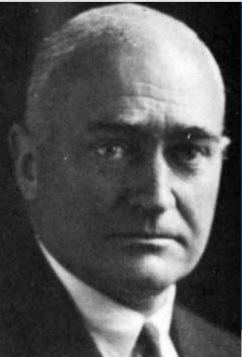
C J de Kup in later life dated around 1940 (c)
The O.D (service for maintaining order) was setup in various area’s in the country by mostly high ranking officers from the former Dutch Forces, assisted by army cadets which (at that time) were not considered to be needed for forced labour or a security problem by the Occupational forces. The aim of the organisation was to have a command / governing structure in place once the war as over as in the beginning it was not expected that the war would last very long. The O.D organisation wanted to ensure that there would be no “void” in Government between the Nazi’s leaving and the Dutch Government in exile returning. And indeed in 1945 they did play a role in re-establishing the governmental structure once the war was over.
By late 1940 it became clear that the occupier was there to stay and some of the OD people now became active in the KP groups. (KP = Dutch for “Knok Ploeg” or Fighting group) the KP’s were the operational arm of the resistance and provided active resistance. Furtheron (d) Captain DeKup seems to, apart from the O.D and the K.P, also been connected to the L.O (National Organisation to help those who were hiding from prosecution which included Jewish peoples)
I have not been able to find out yet what he exactly did during this period when he was in charge of a local resistance group in Hilversum.
But it was not for very long as on 28 September 1941 he was arrested by the Nazi occupier and sent to a concentration camp after the (first) process conducted by the Nazi occupation against Resistance leaders. According to some sources this was in Maastricht (as the L.O was organised from Venlo) according to some other sources this was in Amersfoort (which is closer to Hilversum but he is not on the published lists of this trial). He also might have been transported to Amsterdam where the German “Sicherheits Dienst” for this area normally dealt with Terrorists. Until we find a transcription of the trail, we do not know. During the trial he was sentenced to Death.
After the process he was sent to Amersfoort awaiting further transportation (c) He ended up in Concentration camp Neuengamme, near Hamburg, where a lot of resistance people were sent to in the following years. He arrived there on 25 September 1942 and carried camp number 10322. He died on on 11 November 1942. The “Death books” of the camp do not give a clear cause for his death. (d) The archives hold at note saying that he died from heart complications before he could be executed. (h)
At home they found out fairly quickly about it his death as on 21 November 1942 it was announced by the Swimming Club in the local newspaper.
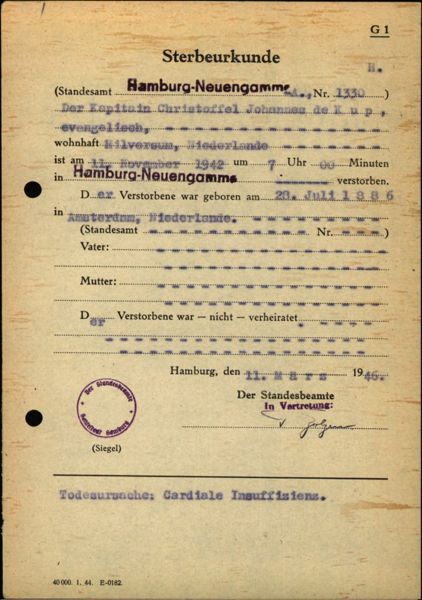
Death certificate of Captain C.J DeKup (h)
Officially the Registration office of Hilversum was only made aware of his death when it received a note from the Red Cross dated 12 October 1945. This note was received on 27 August 1946 and it was duly noted that he had passed away at Hamburg – Neuengamme. The notation in the register was in conjunction with another number of reports of locals who had also died in various parts of Germany.
The Municipality of Hilversum named a street after him in 1955, The “De Kup Straat”. (f)
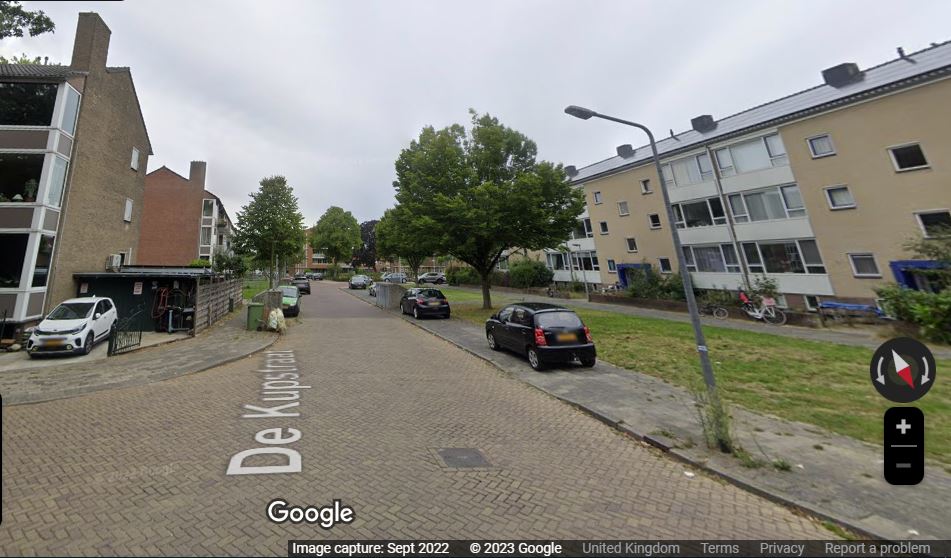
De Kupstraat copy from 2022 Google Earth photo.
(* Town about 20 miles South East of Amsterdam and famous for the National Broadcasting Studio’s)
(**) There was a large group of Resistance people who were convicted at the trials in the Spring of 1942 and those who got the Death Penalty were sent to concentration camp Matthausen and were indeed executed. Question is, what did exactly happen to Captain de Kup, what did he do so that he was caught, put on trial, but then ends up in another concentration camp,

Captain de Kup is remembered on the local memorial at Hilversum (c)
Sailing List: (b)
Date: Function: Ship: Wages and/or remarks.
24 Aug. 1903 Cadet Amsteldijk 10,–
24 Feb. 1904 Cadet Noordam 15,–
29 Aug. 1904 Temporary dismissed to go to school for 3rd mates license Passed on 11 Nov. 1904
30 Dec. 1904 Act. 4th. Officer Rijndam 20,–
21 Apr. 1905 4th. Officer Rijndam 30,–
13 Sep. 1905 Temporary dismissed
02 Oct. 1905 4th. Officer Noordam 30,–
01 Jan. 1906 Temporary dismissed to join the Royal Navy Reserve. Joined as extraordinary ensign
17 Jan. 1906 4th. Officer Noordam 30,–
13 Jun. 1906 4th Officer Nieuw Amsterdam 30,–
04 Sep. 1906 Temporary exemption for joining the Navy Reserve until mid Oct. 1906
06 Oct. 1906 Temporary dismissed for the Royal Navy reserve
21 Jan. 1907 3rd Officer Statendam 40,–
21 Dec. 1907 Temporary dismissed to go to school for 2nd mates license. Passed on 22 Apr; 1908
11 May. 1908 3rd Officer Statendam 50,–
22 Mar. 1909 3rd Officer Rotterdam 50,–
28 Mar. 1909 2nd Officer Potsdam 60,–
20 Oct. 1909 2nd Officer Zaandijk 70,–
12 Jun. 1910 Temporary dismissed to go to school for first mates license. Passed on 14 Sep, 1910
01 Oct. 1910 Temporary ashore for the Royal Navy Reserve for six months training.
01 Jan 1911 Due to wage review 130,–
29 Mar. 1911 2nd Officer Rotterdam 130,–
11 Dec. 1911 Temporary dismissed for the Royal Navy Reserve 3 months exercise
11 Mar. 1912 returns from the navy
25 Mar. 1912 Chief Officer Andijk 140,–
09 Apr. 1912 Chief Officer Sloterdijk 140,–
26 Aug. 1912 Chief Officer Zaandijk 140,–
21 Jun. 1913 Temporary ashore
03 Jul. 1913 Wage increase 160,–
03 Jul. 1913 Chief Officer Westerdijk 160,–
07 Apr. 1914 Wage increase 175,–
15 Aug. 1914 Temporary dismissed for the Royal Navy Reserve due to the mobilization of the country
30 Jan. 1917 Wage increase 200,–
30 Jan. 1917 Chief Officer Nieuw Amsterdam 200,–
29 Apr. 1917 Chief Officer Noordam 200,–
12 Nov. 1917 Temporary dismissed for the Royal Navy Reserve
03 Jun. 1918 Chief Officer Noordam 200,–
01 May.1919 Temporary ashore due to illness
07 Aug. 1919 Chief Officer Rijndam 300,– with the Noordam to NY
08 Oct. 1919 Temporary ashore
16 Feb. 1920 Chief Officer Schiedijk 300,– temporary only
20 Mar.1920 Temporary ashore 300,–
01 Jan . 1920 Wage adjustment 330,–
02 Jun. 1920 Promoted to Captain 600,–
02 Jun. 1920 Captain Zaandijk 600,– temporary assignment
12 Jul. 1920 Captain Vechtdijk 600,– with the Harwich boat to Sunderland
01 Jan. 1920 Wage adjustment 650,–
15 Oct. 1920 Wage increase 675,–
15 Aug. 1921 Captain Amsteldijk 675,–
16 Oct. 1921 Wage reduced to 610,–
29 Nov. 1921 Captain Tamora (Meerkerk) 610,– at Hamburg for the Holland British India line
19 May. 1922 Wage decreased 585,-
01 Jun. 1923 Postponement of exercise with the Royal Navy reserve until 1 july 1923
20 Nov. 1923 Temporary ashore returns to NASM from HBIL
10 Dec. 1923 Captain Blijdenddijk 585,–
22 Jan. 1924 Captain Sommelsdijk 585,–
01 Mar. 1925 Promoted to Lieutenant First Class Royal Netherlands Reserve
22 Jul. 1926 Captain Grootendijk 585,–
01 Apr. 1927 Wage increased 605,–
01 Jan. 1929 Wage increased 625,–
01 Jan. 1930 Wage increased 640,–
29 Jan .1930 ashore 625,–
01 Feb.1930 Temporary dismissed for the Royal Navy Reserve for one month to join the higher war academy.
01 Mar. 1930 Temporary ashore regular leave 640,–
31 Mar. 1930 Captain Moerdijk 645,–
02 Jul. 1930 Captain Grootendijk 645,–
02 Aug. 1930 Captain Dinteldijk 645,– in 3 years sailed 2 years and 8.5 months (until 16 Mar. 1931)
17 Jul. 1931 ashore 645,–
12 Nov. 1931 Wage decreased to 516,–
And put on 100% standby money
01 Jan. 1932 Dismissed and put on standby money
Sources:
(a) Ships Photos Capt. Albert archive.
(b) Stamboek Holland America Archives as held by the Municipal Archives of the city of Rotterdam
(c) Opdat Wij Niet Vergeten Verhalen van 25 Verzetshelden van Hilversum (Book by Pieter Broertjes en Margot Kistemaker)
(d) Monument.vriendenkringneuengamme.nl. (Dutch Neuengamme Memorial website)
(e) www.arend.net
(f) Mr. E.H Kruidhof
(g) Comportementen boek Kweekschool voor de Zeevaart.
(h) Gooi & Vecht Historisch Streekarchief.
Last updated: 29 June 2026.

Leave a Reply